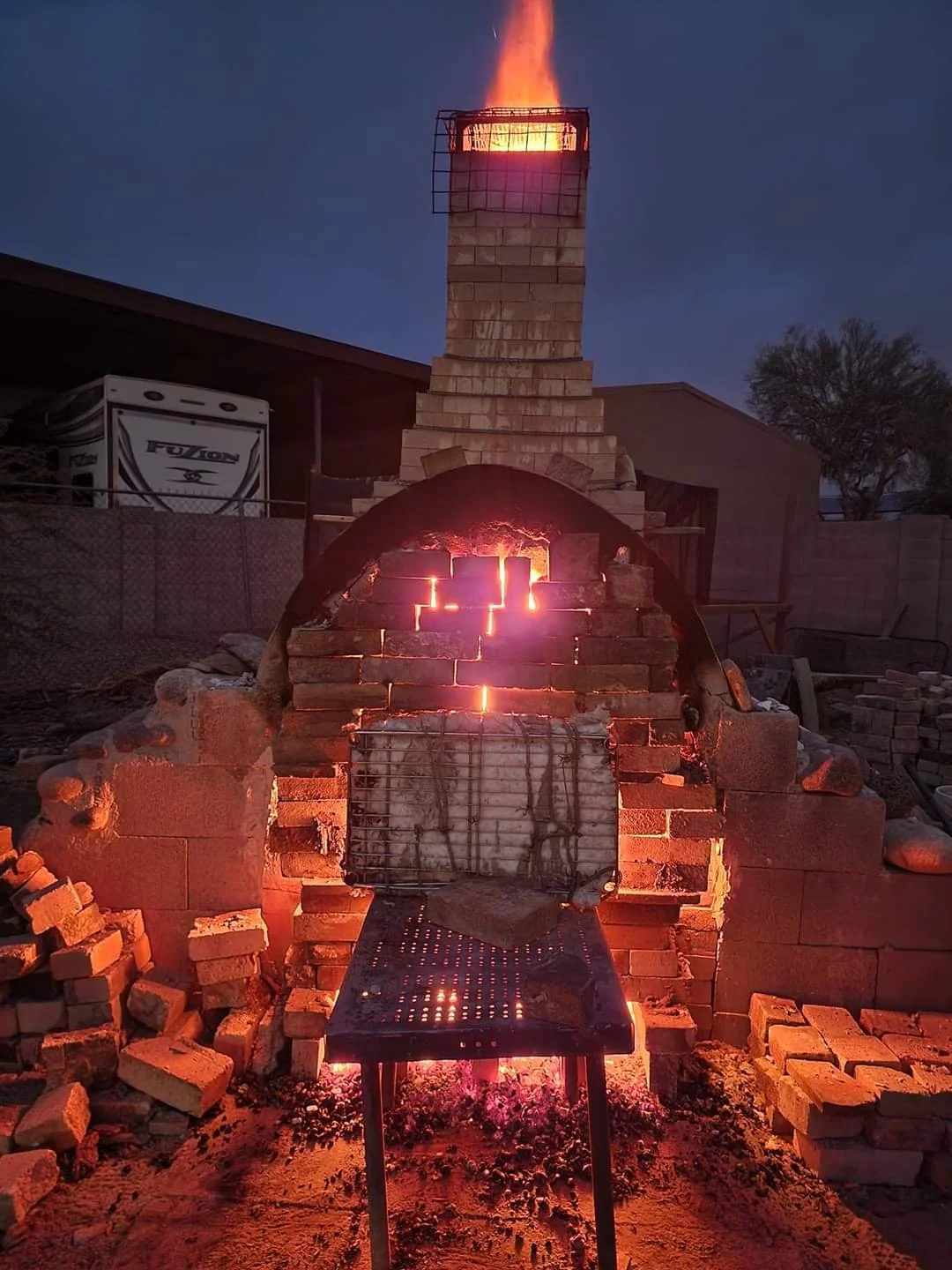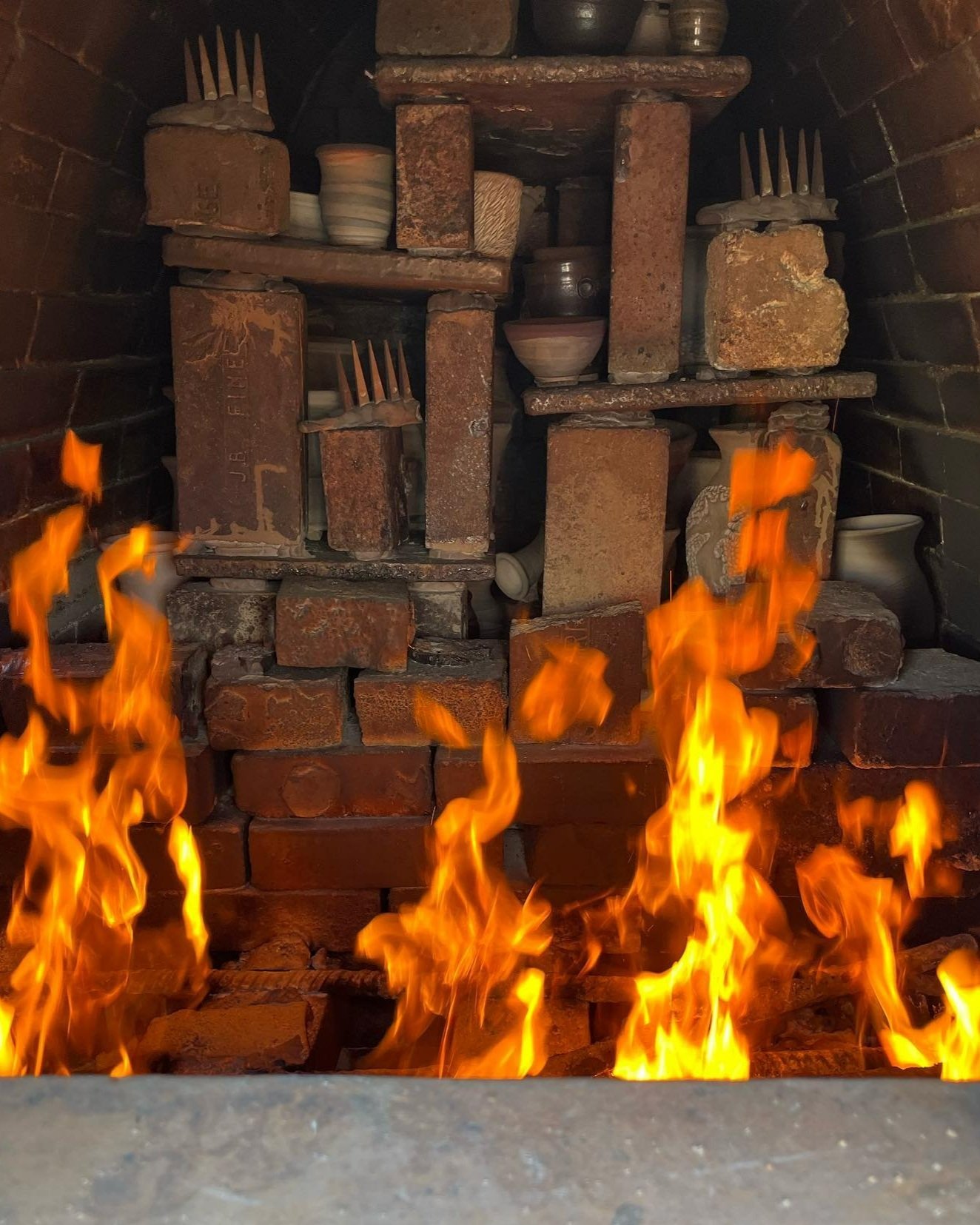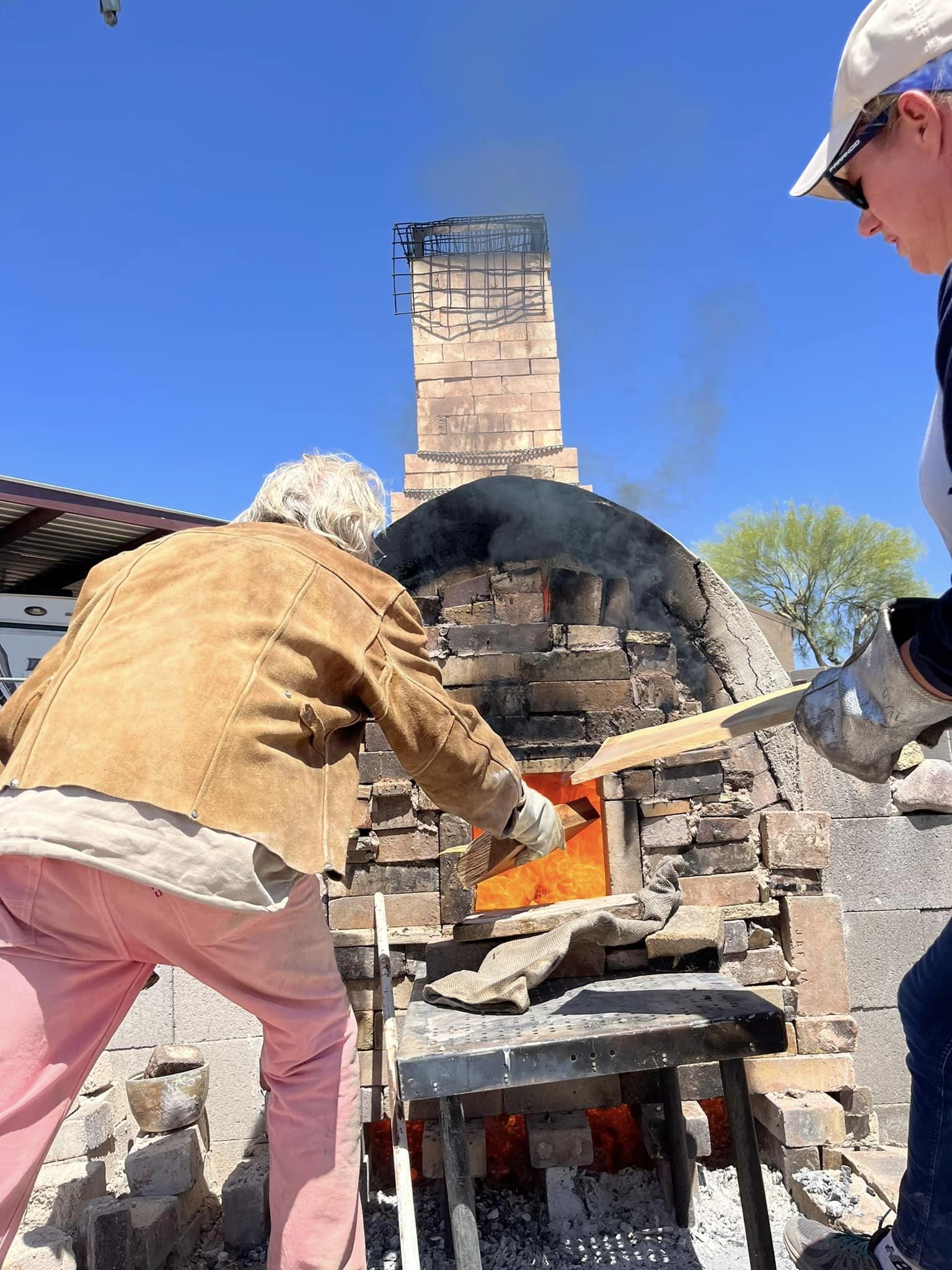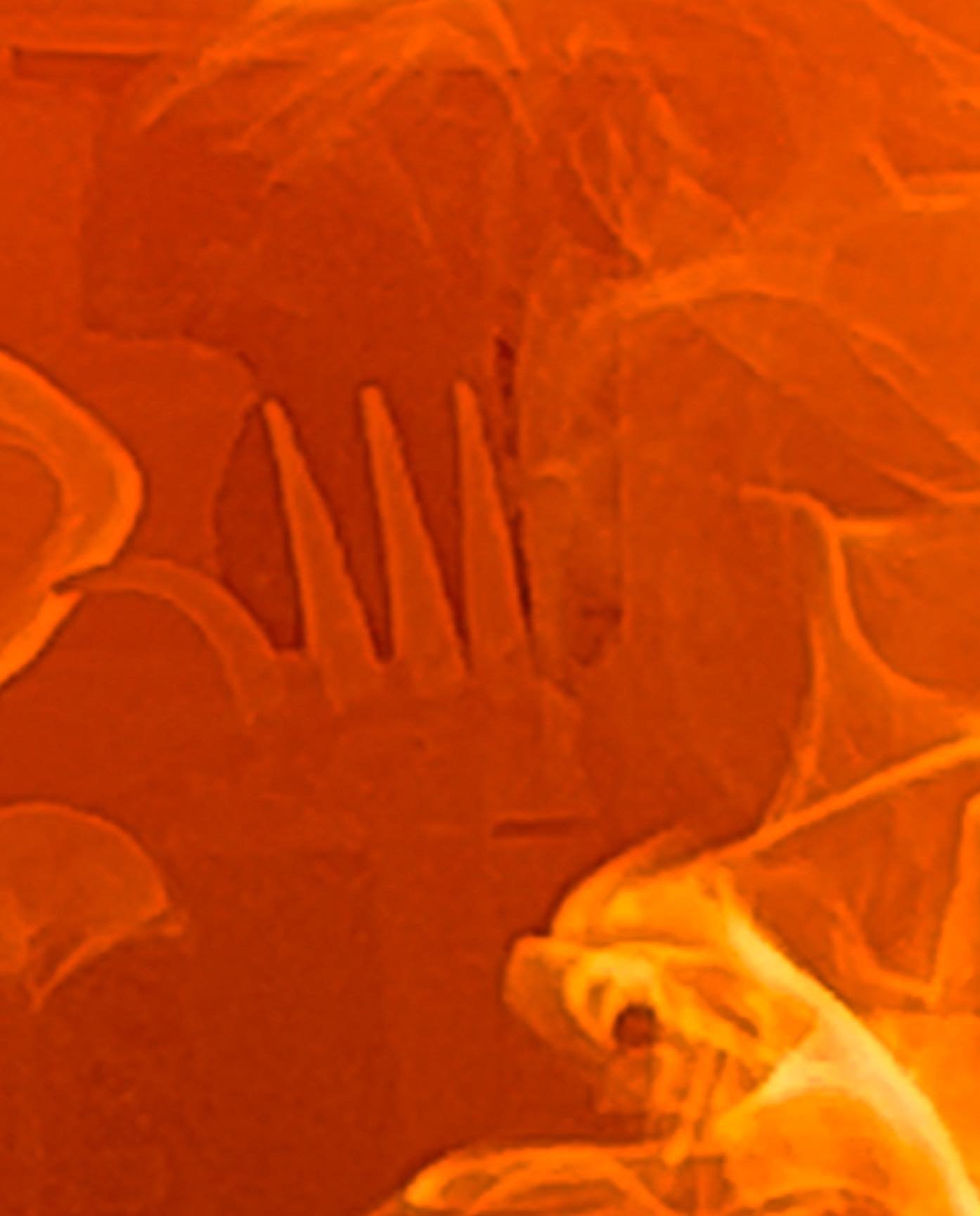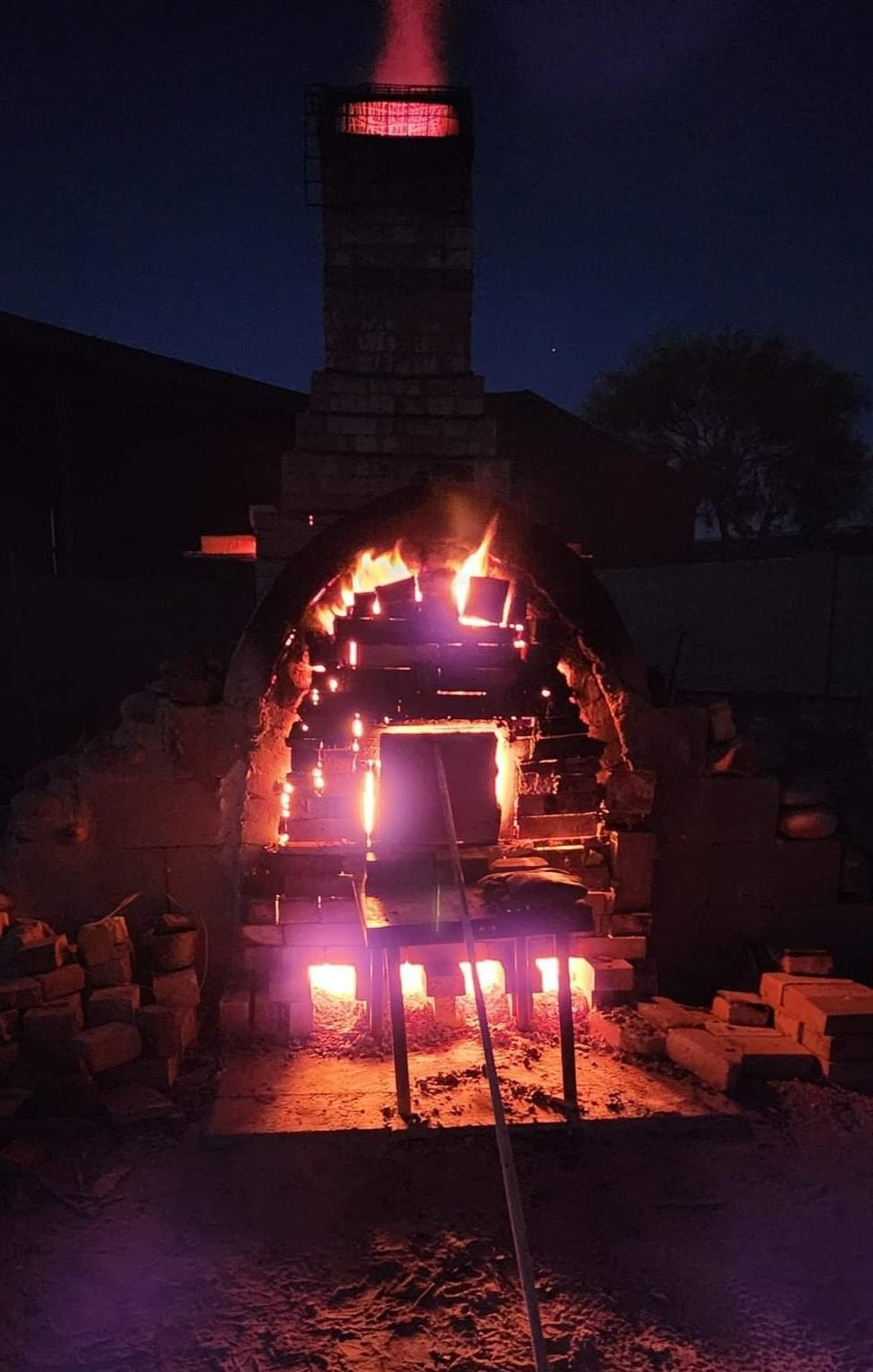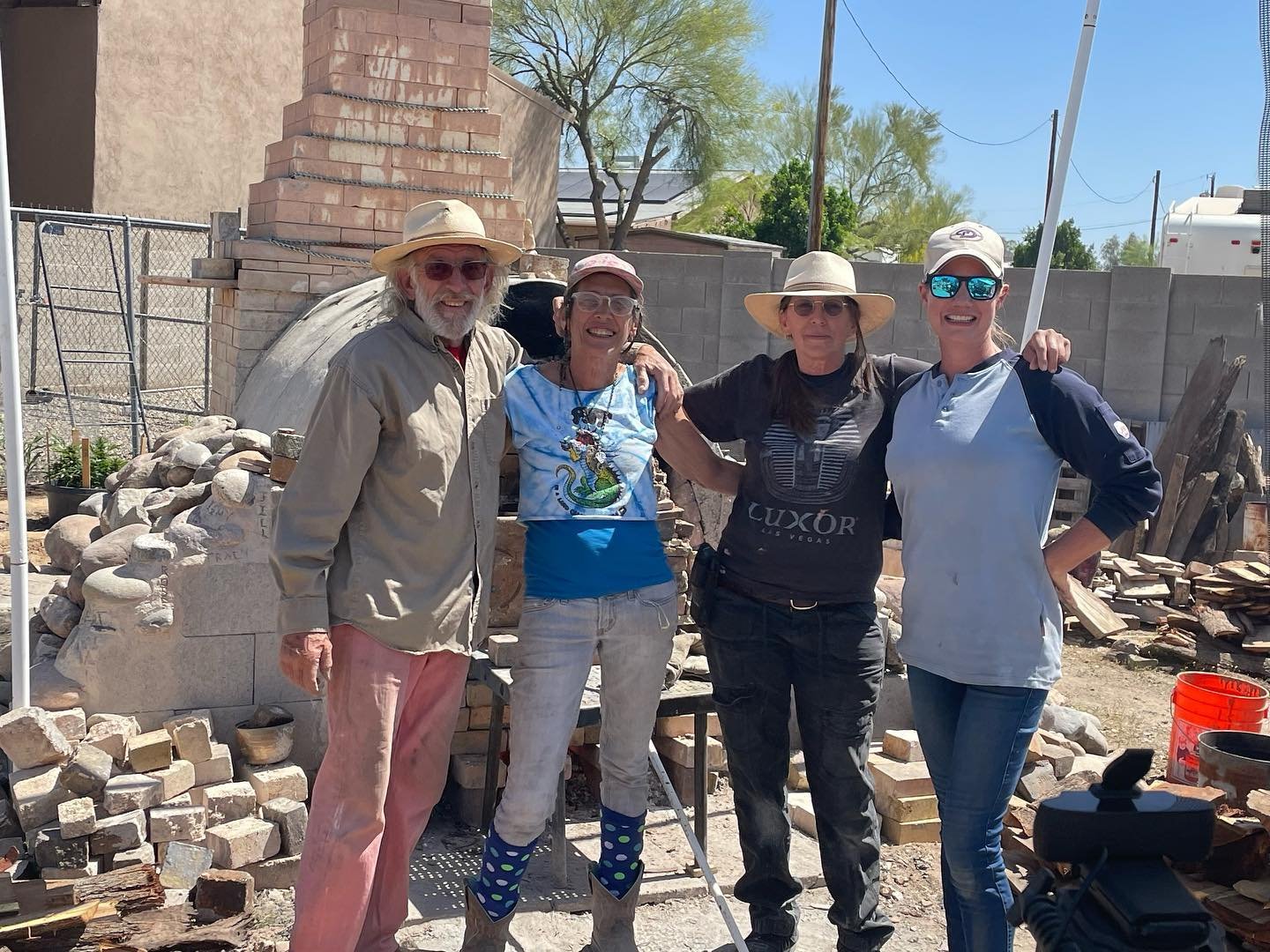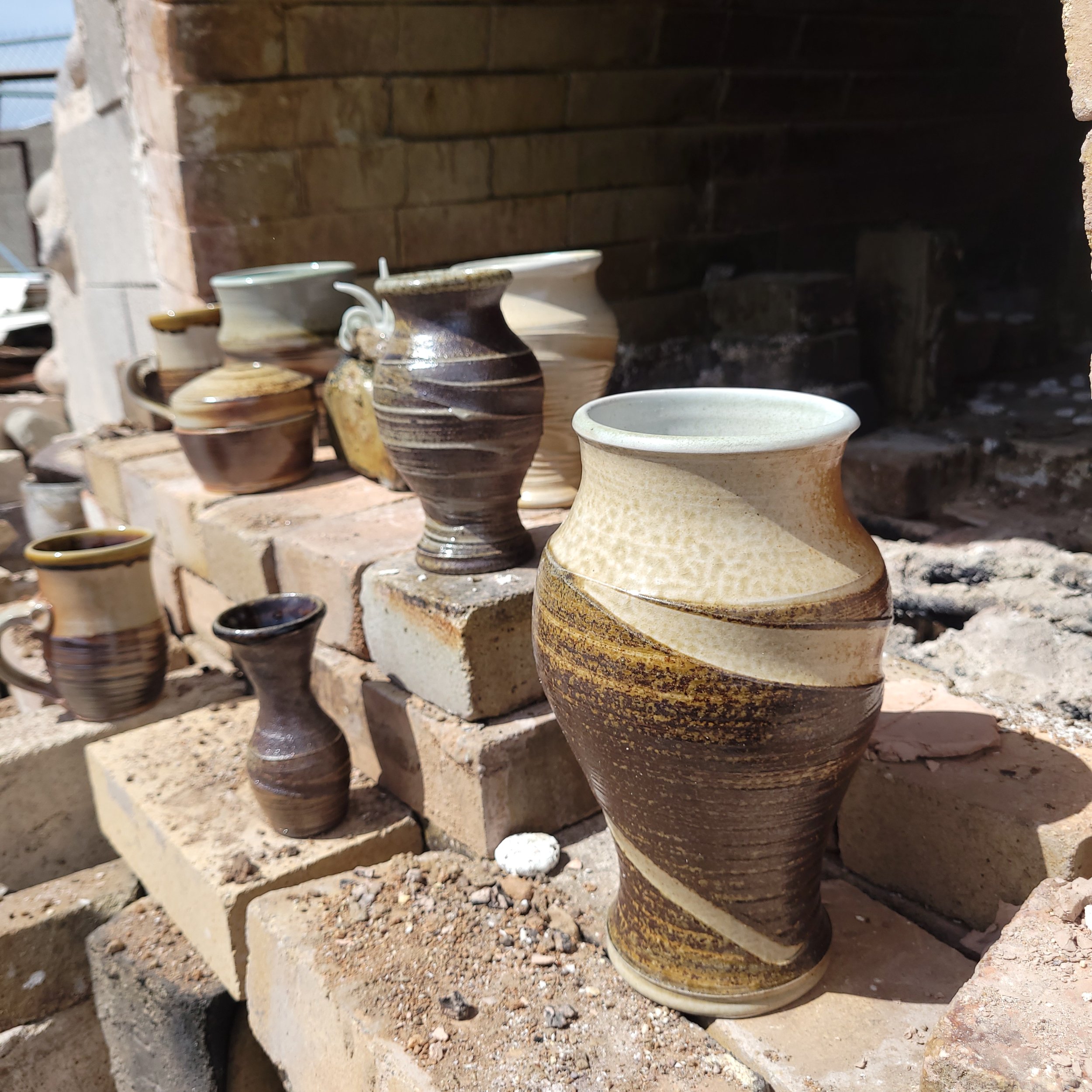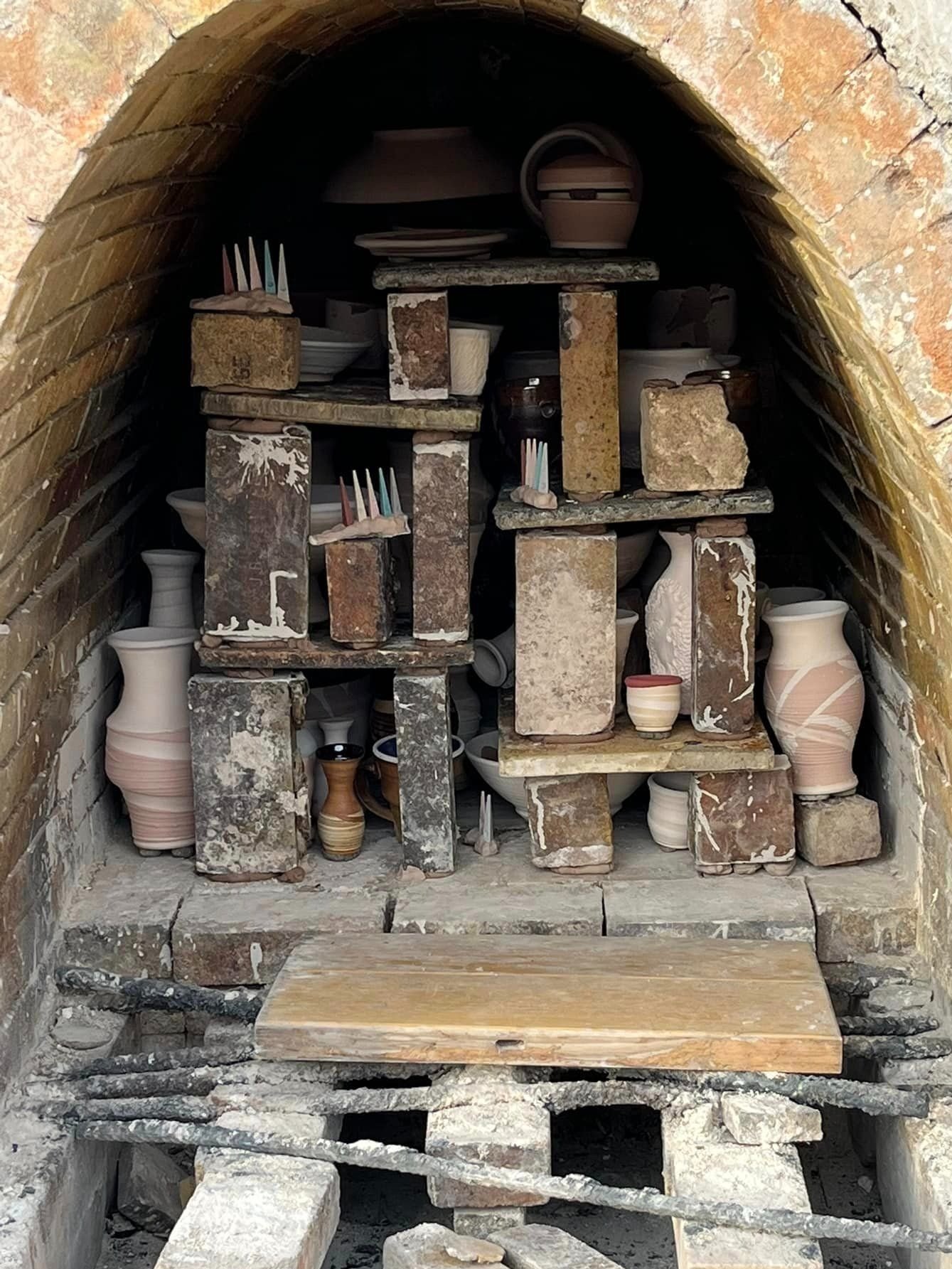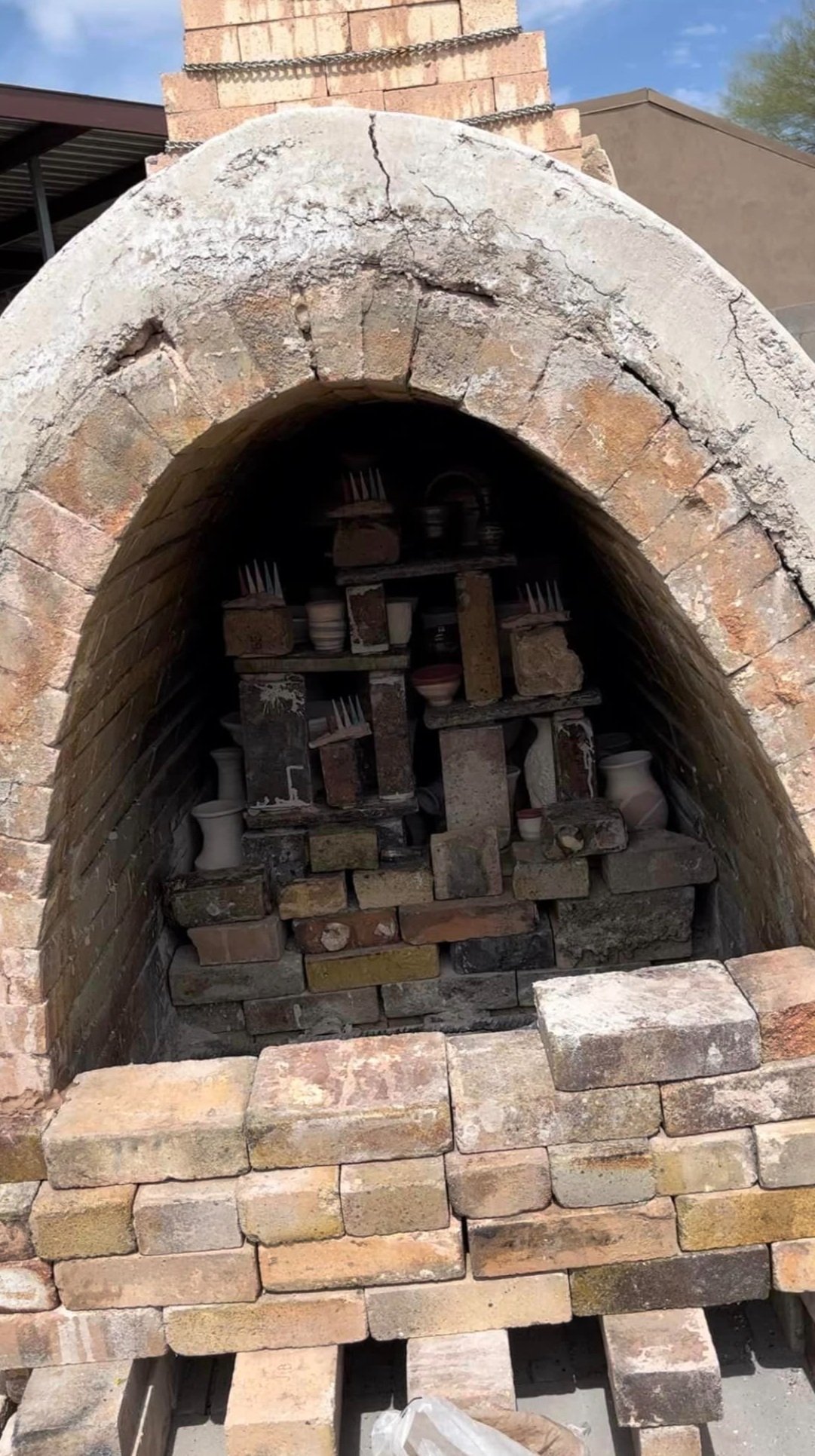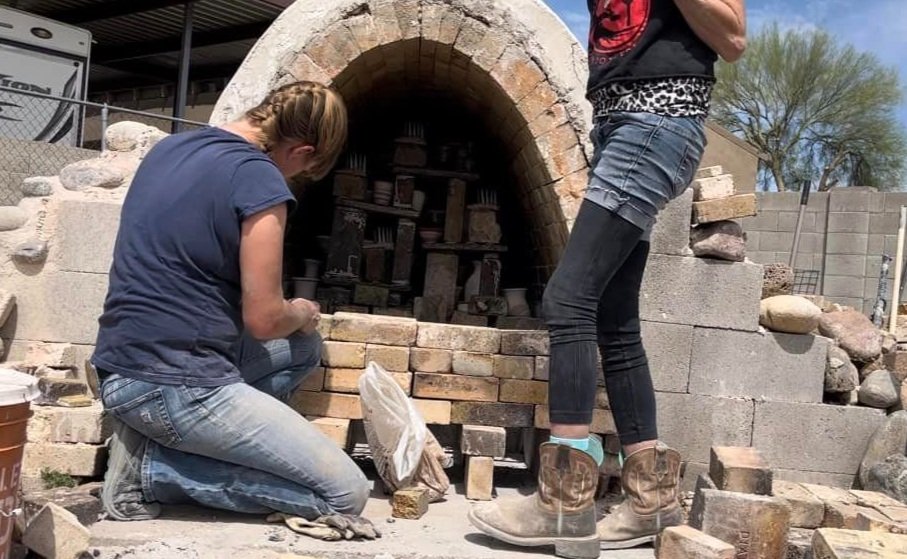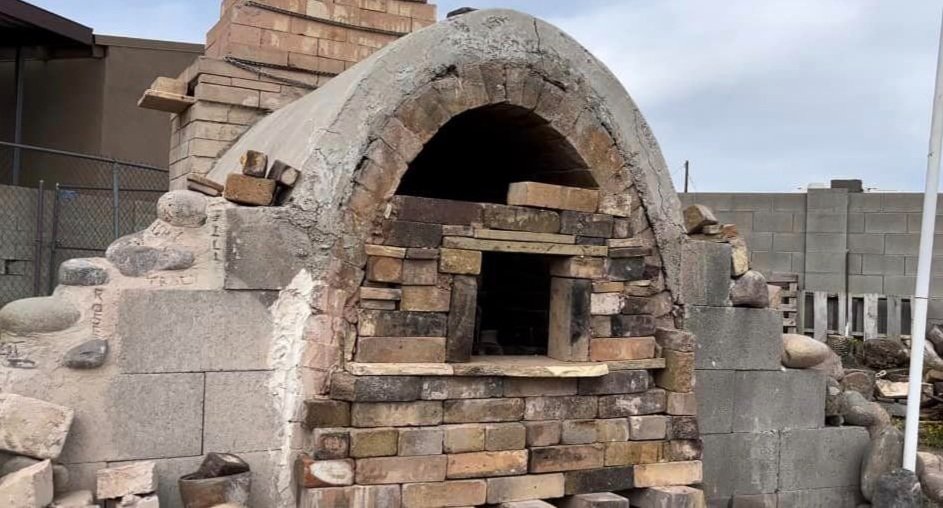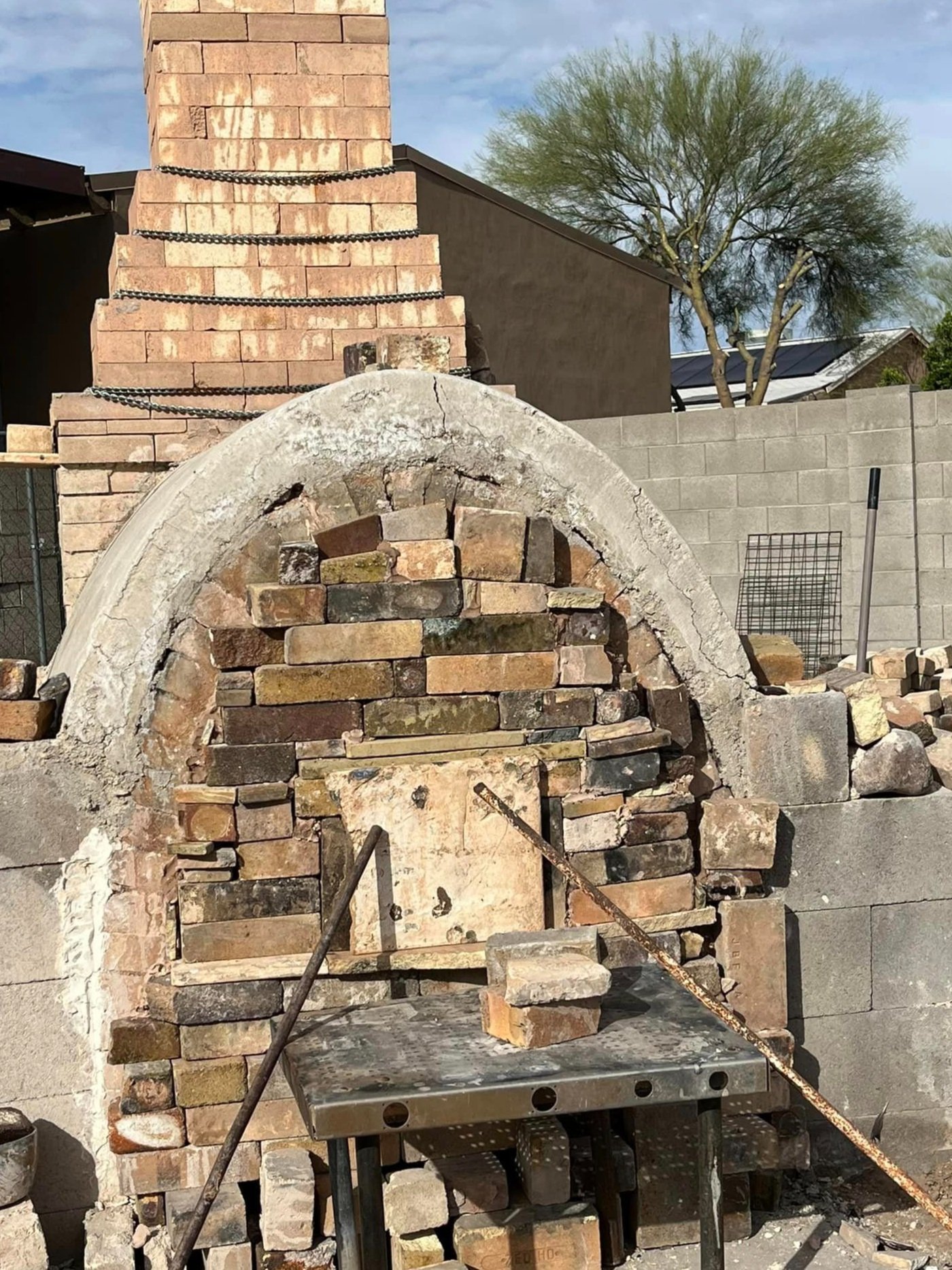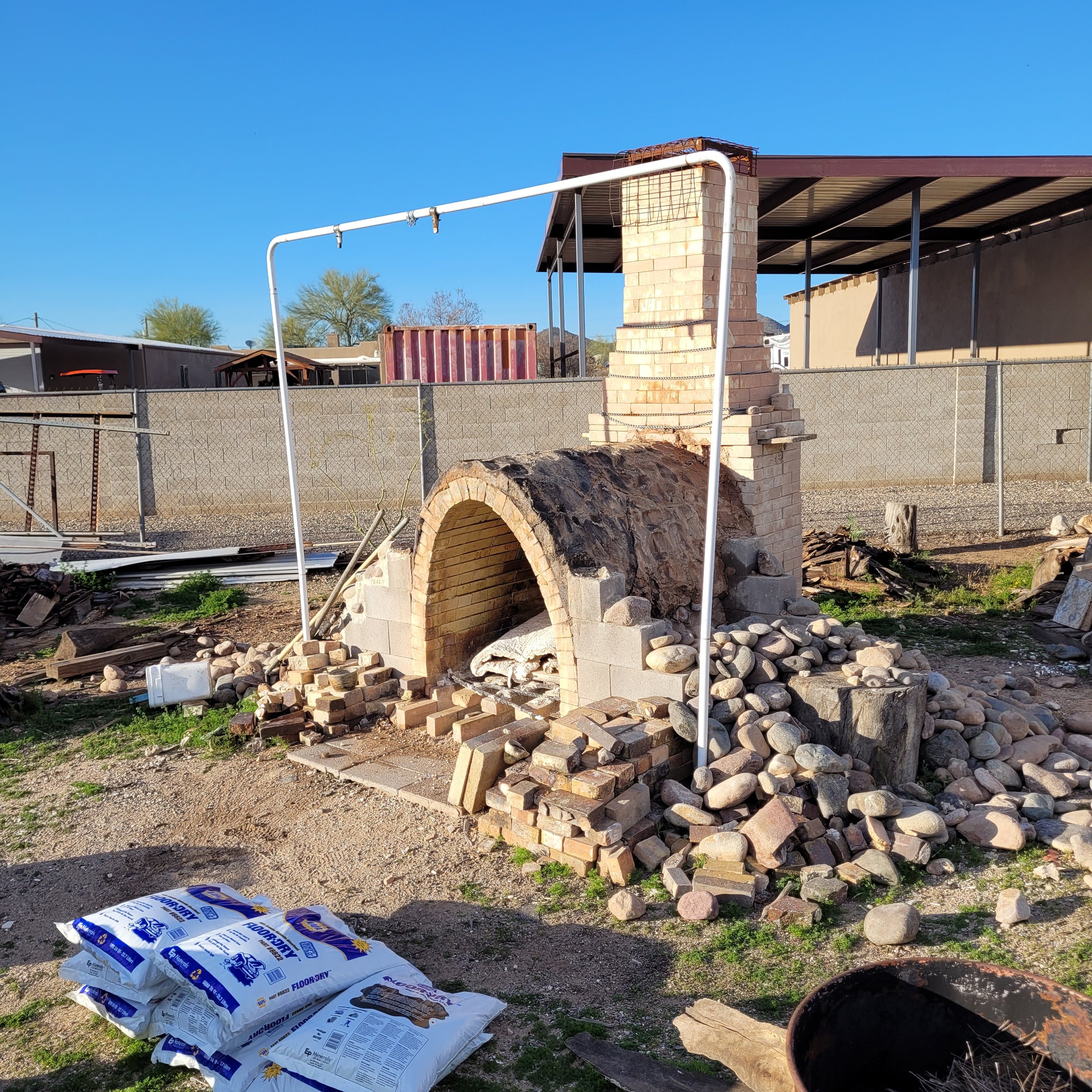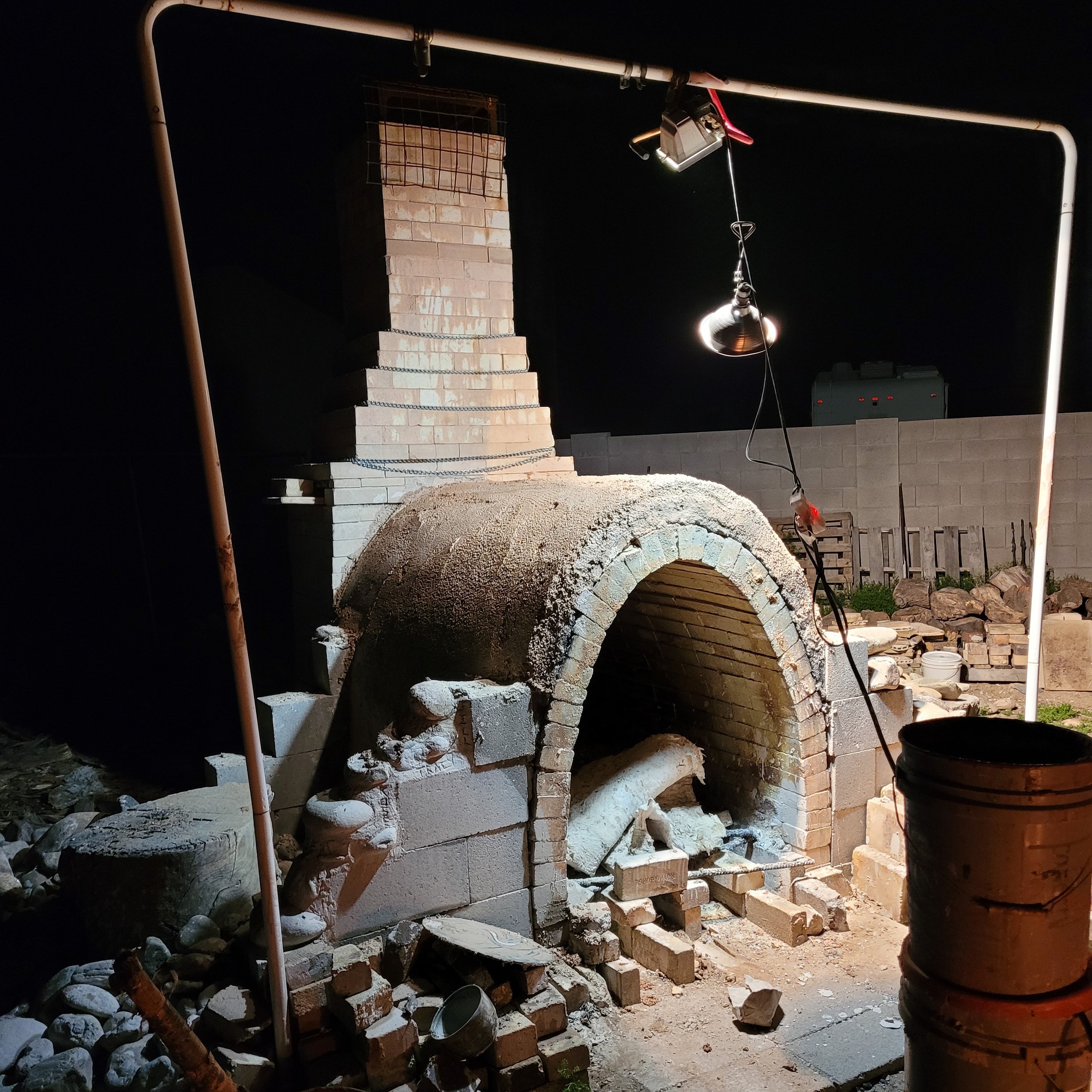By this past January I was really ready for a wood firing, Luckily I wasn’t the only one. So the date was set, we planned to load and fire in mid January. We did not get many pictures of the actual loading process, as things went pretty fast and furious once we got started. I made the mistake of thinking I could get some of my glazing done as we were loading (it worked out, but - note to self - this really isn’t a good idea).
Here are the pictures we did manage to take, along with some notes about how it all went.
Loading the Kiln
These first 2 photo’s are really prep shots. In the first pic, you can see one of our wood piles. Logs have been cut down to a manageable size. The second shows me just about to start loading our pots.
The first layer of pieces are loaded right onto the kiln floor. You can see that the floor and walls of the kiln have been covered in a thin layer of kiln wash (which looks like a thin layer of white paint). The kiln wash will help to prevent any pots or kiln furniture from fusing to the floor during the firing. We will also use a malleable material (called wadding) between anything touching the kiln floors or walls or shelves, for the same reason. The wood ash in the atmosphere of the kiln will coat Everything in the kiln in it’s own glassy glaze, so these refractory materials are necessary to keep pieces from fusing together, or fusing to the kiln.
In past firings, it’s been tough to get everything on the floor up to the temperature we want. Last winter, I worked with John Manley to improve the insulation on the kiln. This definitely helped, but we still had some cool spots on the floor in the last firing. This time, we kept the first row of shelves very short, which freed up a bit more space higher up in the kiln. Then we loaded things pretty loose on the floor - we left plenty of room between pots so the air and flames could easily flow around them. This seemed to pay off, I think nearly every pot on the floor turned out quite nice in this firing.
These pics show the final stages of loading. The multi-colored spiked piece are the cone packs. Each spike is a cone, and each is formulated to melt at a different approximate temperature. Cones allow potters to measure not just the temperature of the kiln, but the effect the heat is having on the clay in the kiln.
In the last pic above, we are all loaded up, and ready to brick up the front of the kiln. Our cone packs set up where we can see them, and we’ve built a low, loose wall between the firebox at the front of the kiln, and the pots in the back. This gives the pots some protection from the wood we throw into the firebox. I think it also helps by pushing the heat up to flow around the kiln. Not everyone agrees with me on this, but it’s an opinion based on observations I’ve made on multiple firings done in this kiln - when we don’t build this wall we don’t get to cone 10.
In this firing we did 2 separate stacks of shelves - you can really see this in the last picture above, there’s a separate stack on the left and on the right. In the past, we usually had at least 1 shelf (or half shelf) at the very top, which would straddle across the 2 stacks below it - we left that out this time. But it was missed; the left stack of shelves shifted and leaned, and the back corner landed all the way over onto the kiln wall during the firing (luckily it did not fall far, and there weren’t many casualties).
Bricking Up the Door
We’re building the door pretty fast and furiously in these pictures. We start our door off with 2 layers of brick, so that it’s nice and thick and sturdy at the bottom. Once we get the stoke hole built in, we switch to a single layer. Next time we may try to keep that double brick thickness all the way up.
In the last pic above, Mishy is placing the new stoke hole cover in place. Garry Price built this using a metal rack of some kind, some old electric kiln elements, and a lot of fiber insulation - it worked beautifully! (You’ll get a better view in later pics and videos.)
We were all loaded up with the door bricked up on a Thursday, and we decided to start firing around 10 am the next Saturday. The plan was to fire into and through the night, as long as needed.
Firing the Kiln
In the first couple of this group of pictures, you can see Garry starting the fire at the very bottom of the firebox, through the vents at the very bottom of the door. After a solid hour or so we graduate from smaller sticks and bark fed into the vents, to larger pieces fed in through the stoke hole. These larger logs sit on top of the grate we’ve built in the front of the kiln (the firebox). By the end (a solid 12+ hours after we began) we could see most of our cone 11 cones down, with some cone 12’s bending as well.
This video clip shows me pulling the stoke hole door before a stoke. This is nearing the end of the firing, the temp is likely around 2300°F. You can see here the heat is pretty close to white.
This last pic of the firing was taken just after the final stoke. We let the fire burn down for a bit after that - 10-15 minutes or so. Then we close up all of the holes - the chimney flues are closed, we brick up the vents at the bottom of the door, and we mud up any cracks we see.
We tend to give the kiln 3 days to cool before breaking down the door to see the results. It’s tough to wait, and probably 2 days would be enough, but we want to be certain everything has had plenty of time to cool. Just speaking for myself here, but after a few days of obsessing over a wood firing, I usually need a few days to catch up on all the other things going on in life.
January 2024 Desert Dragon Pottery Wood Firing Crew
Unloading the Kiln
After patiently waiting, we are so ready to tear down the door and see the results!
Once the door was down, we found that we had been blessed by the kiln. Pots at the top were nice and ashy. As we dug down through the middle and to the bottom, it appeared that we reached cone 11 throughout the kiln, with some spots hitting cone 12. Below are quite a few highlights, and shots of many of my pieces from this firing.
We were all happy potters, and we were all thinking about when we can do it again! As it often does, Spring got very busy. John Manley came to visit, and he did a wood firing that a few of us participated in. (I got some bonus wood fired pots!) It was fun to see how he did things different in firing his own work, some of which is quite large - filling the kiln from top to bottom. With the Phoenix weather rapidly warming up, the next firing will not be until the weather cools again next fall. But we will be ready to apply the knowledge we gained in Winter/Spring of 2024.
That wraps up the January 2024 Wood Firing! Here’s a super speed clip of the kiln unload - Enjoy!
One final thing - here’s the short video I’ve just made, and it kinda sums this all up. I’m going to share this on my socials, and save it here because I like it. Happy potting :)











